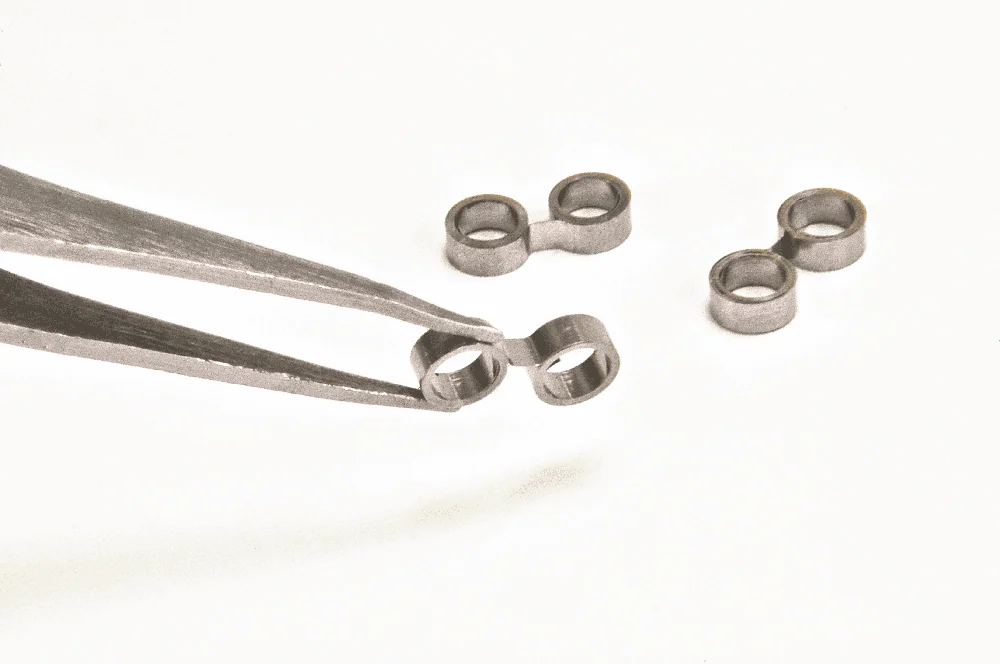Motor brush springs are important components in brushed electric motors. The main components in a brushed motor are a stator, which includes a permanent magnet, and a rotor with copper or other metal wire coiled around it. A component called a commutator is also connected to the rotor. Graphite or carbon brushes are held against the commutator with pressure from brush springs. This allows the brushes to send a steady current to the commutator and coil, which creates an electromagnetic field and rotational energy that causes the motor to turn.
The springs allow the motor to run efficiently without arcing or other gaps in power. As the commutator turns, the brushes become worn over time due to friction. The springs ensure proper contact force against the commutator as they wear.
John Evans’ Sons is a leading manufacturer of custom and specialized springs, including AAMA qualified balance springs. We provide constant and variable force springs, torsion and helical springs, and more. Additional manufacturing capabilities include metal stamping and wire forming.
Learn more about our selection of motor brush springs and their applications.
Motor Brush Springs from John Evans’ Sons
Depending on the application and spring force required, brush springs can be composed of a single spring or twin spring configuration. We use advanced spring coilers and assembly stations to manufacture brush springs in a range of dimensions and force capacities.
| Material Selection | Stainless steel is a common choice because it is corrosion resistant, durable, and flexible enough to apply constant force without deforming. John Evans’ Sons typically uses 301 high yield stainless steel for brush motor applications. |
| Spring Thickness | Spring thickness affects its strength, force capacity, and flexibility. |
| Coil Diameter | The diameter of the spring coil affects compression force and deflection. |
| Free Length | This is the length of the spring when it is exposed to any external load. Free length affects the spring’s ability to maintain contact pressure between the commutator and brush. |
| Travel Requirement | This refers to the amount of travel the spring requires to maintain proper contact with the commutator, which changes as the brush wears over time. |
| Load Requirements | This specifies the amount of force the springs must exert on the brushes to maintain proper connection with the commutator. |
| Operating Temperature Range | The spring material must be able to withstand the temperatures encountered during motor operation without deforming or failing. |
| Fatigue Life | This refers to the number of cycles the spring can withstand during its service life. |
| Environmental Factors | When designing a motor brush spring, it’s important to consider environmental factors such as exposure to chemicals, moisture, shock, and vibrations. |
| Compliance | For certain applications, springs must meet regulatory and other standards for performance, safety, and tolerances. |
Applications for Motor Brush Springs
Brush springs are used in many motor applications, including:
- Motor brush and back plate assemblies
- Automotive applications, such as windshield wiper motors and car seats
- PLC and motion control actuators
- Train and locomotive components
- Renewable energy applications
Motor Brush Springs Installation
How the springs are installed, or mounted, is important for maintaining proper spring force, pressure on the brushes, and ultimately, motor performance. In many standard applications, the springs are fastened to a v-shaped clip connected to components in the motor housing. Other motor designs may require spiral springs with a flat portion for mounting, or a strip of metal with a spring coil on each end (i.e., saddle spring) that mounts on either side of a bracket or other component.
We can manufacture springs with custom mounting styles, dimensions, and force capacities to meet your requirements.
John Evans’ Sons: Your Motor Brush Spring Manufacturer
At John Evans’ Sons, we design and manufacture custom flat springs from strip materials from 0.125″ to 2.0″ wide and from 0.006″ to 0.625″ thick. Our capabilities also include stamping, spring assembly, and wireforming from strip or round metal stock. Tooling and dies are manufactured in-house for a seamless and efficient manufacturing process. Engineering support is also available.
Since 1850, we have been committed to excellence and innovation in manufacturing through:
- Customization: We can create customized spring designs to meet your requirements.
- Precision Manufacturing: Our state-of-the-art coiling machines achieve great precision for springs that meet tight tolerances in critical applications.
- Design Flexibility: We can help you create a spring design to fit your needs with in-house engineering support and tool and die-making.
- Quality Control: We are ISO 9001, ISO 13485, and AS9100 certified.
- Continuous Improvement: We have a long history of fine-tuning techniques and approaches to spring manufacturing that guide our operations today.
- On-time delivery: Our in-house manufacturing capabilities and value-added services mean shorter lead times and faster delivery.
To learn more about our products and capabilities, contact us or request a quote.

Need Assistance? Consult our Technical Team.
Our Technical Team offers a depth of expertise to assist you with all parts of the process. We are ready to answer your questions in a timely manner and will help you define what you need. We produce custom springs for all purposes, and we are here to work with you on any of your customization needs.
